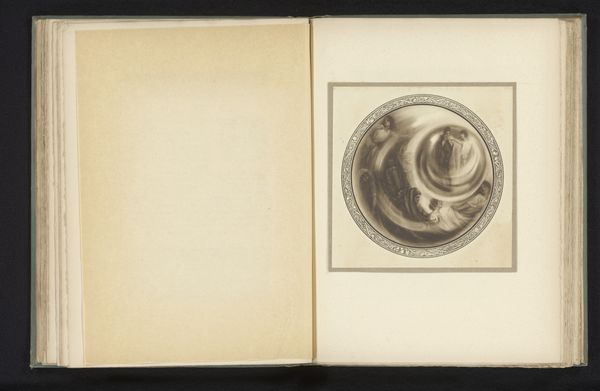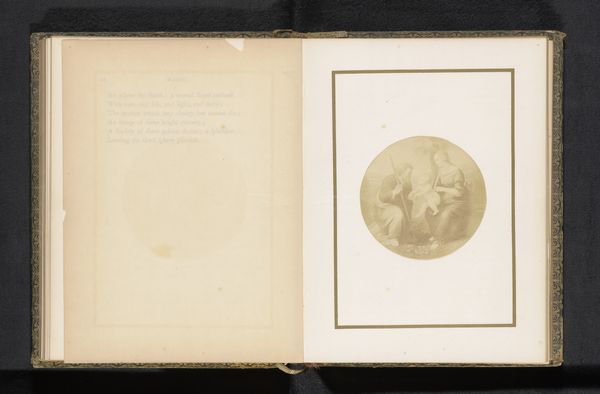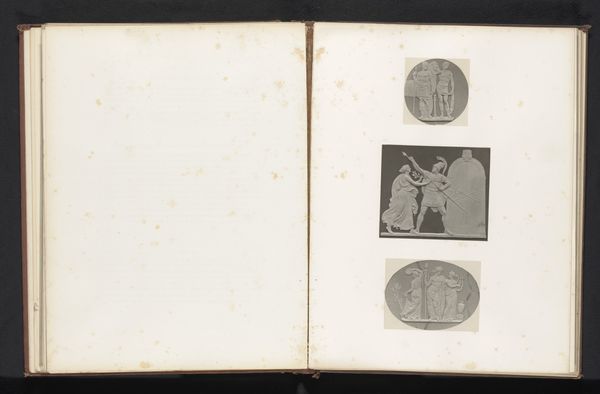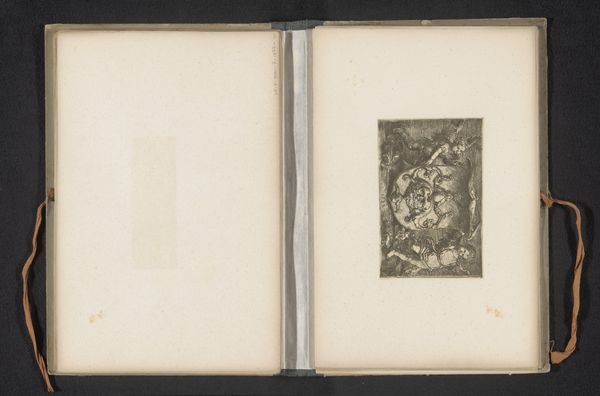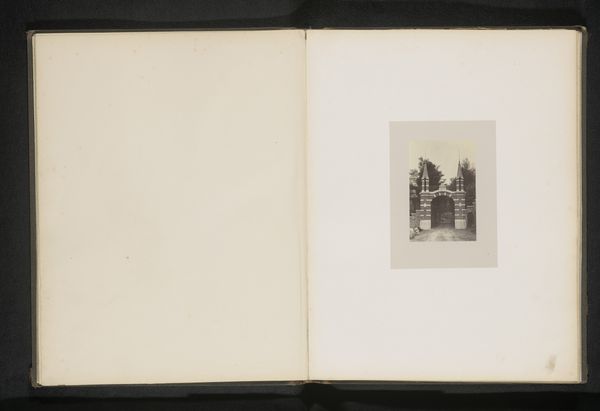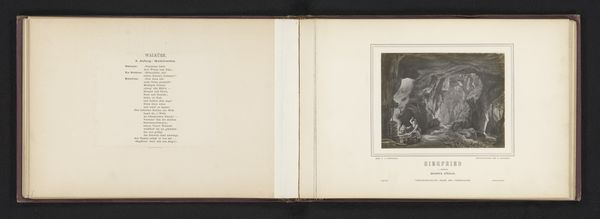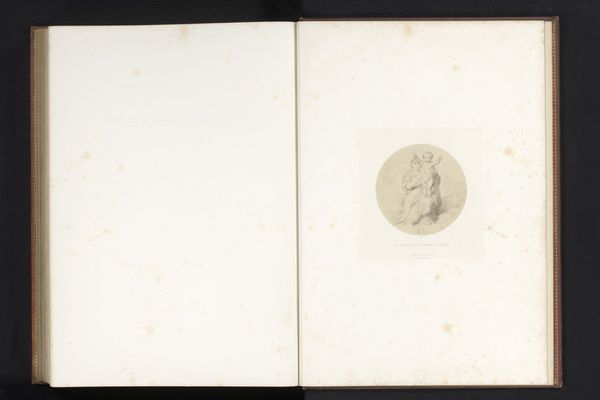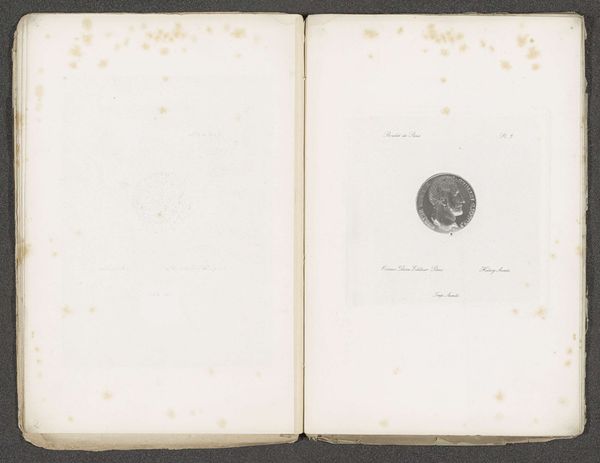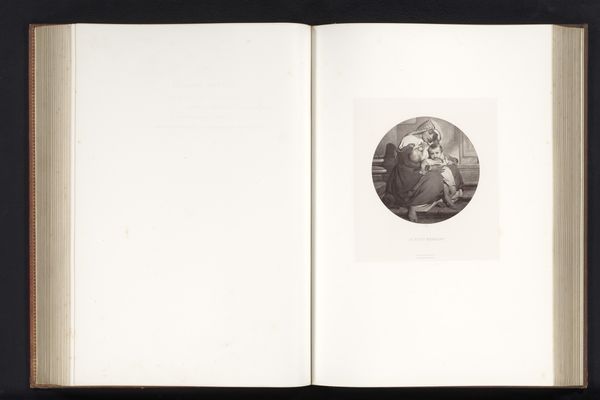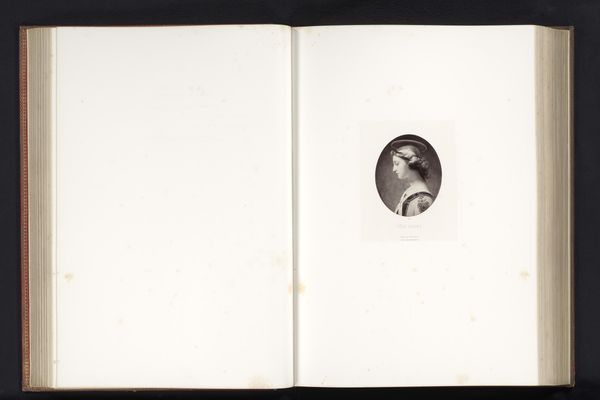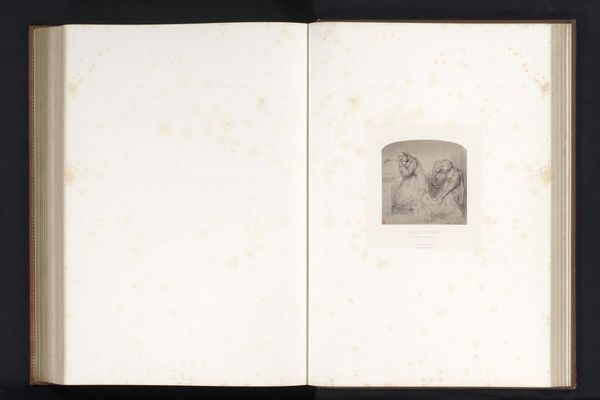
photography, gelatin-silver-print
#
portrait
#
photography
#
gelatin-silver-print
#
symbolism
Dimensions: height 105 mm, width 105 mm
Copyright: Rijks Museum: Open Domain
Curator: Here we have Adelaide Hanscom Leeson's "Drie vrouwen in trance," made before 1916. The piece, a gelatin-silver print, is presented like an illustration in a book. Editor: It gives off such a serene yet subtly unsettling vibe. The high contrast and almost ghostly figures create a sense of otherworldly stillness. What kind of processes did she employ in her photographic printing and development? Curator: Leeson was a key figure in the Pictorialist movement, where manipulating the image during development was commonplace. Her techniques likely included dodging and burning to heighten the dramatic light and shadows, lending to its symbolic weight. We also see evidence of hand-applied textures. Thinking about production—she was also running a photography studio during this period in her career, so it would be fascinating to learn more about studio assistance with production, and to place her amongst fellow woman photographers of this period to develop our historical picture. Editor: I’m also really drawn to the composition. The figures and their ethereal garments are a powerful contrast with the heavy ornate detailing within the photograph's circular boundary and the square around it, the picture seems to both reject and yearn for a relation between fine art and commodity good. Curator: That's interesting because her symbolist approach draws from literary and artistic traditions, evoking spiritual or psychological states. Considering the title, we can delve into turn-of-the-century interpretations of psychology, hysteria, gender and sexuality, and what it means to experience such states when the public sphere denied women agency. The photograph begs the questions; who are they? what is putting them in this ‘trance’? Editor: Right, and placing that photograph, specifically a gelatin-silver print, in relation to the labor practices for production allows us to reframe questions about artistic intention, and what it might have looked like on the studio floor. The question I find most intriguing relates to access - What sorts of markets or audiences was she creating work for? Was it aimed towards galleries or some kind of subscription/domestic setup? Curator: Those are compelling points. Thinking through her social environment, one begins to picture the historical climate and imagine the various hands and experiences that brought this image into being. Editor: Indeed, analyzing art this way creates more enriching layers to how one understands art's value beyond a surface impression. Curator: And perhaps understand how our modern moment impacts the afterlife of artistic legacies as well.
Comments
No comments
Be the first to comment and join the conversation on the ultimate creative platform.
